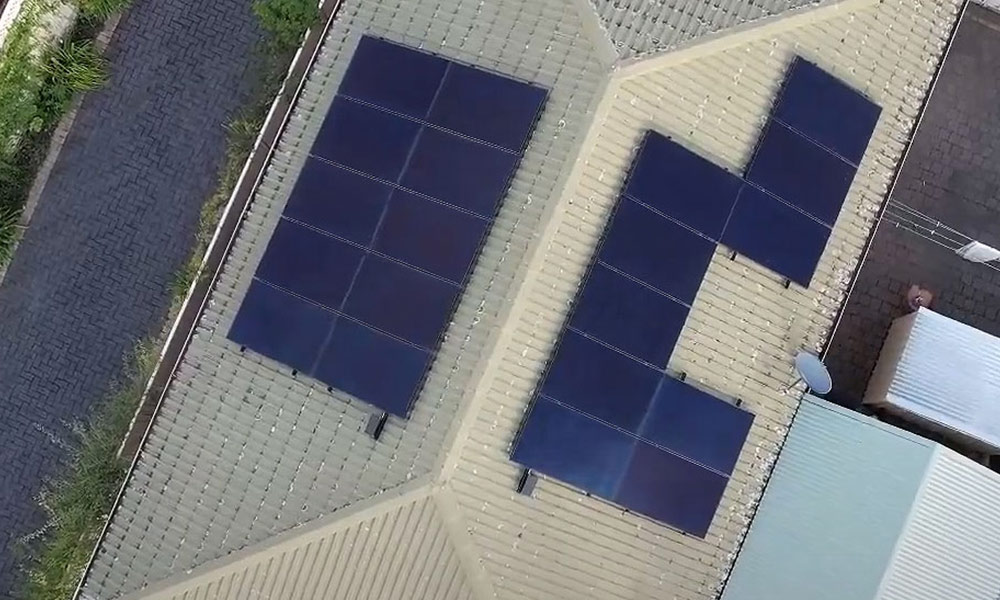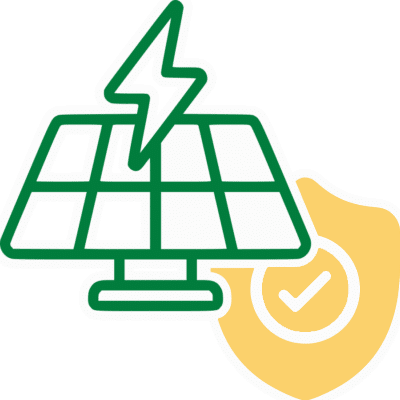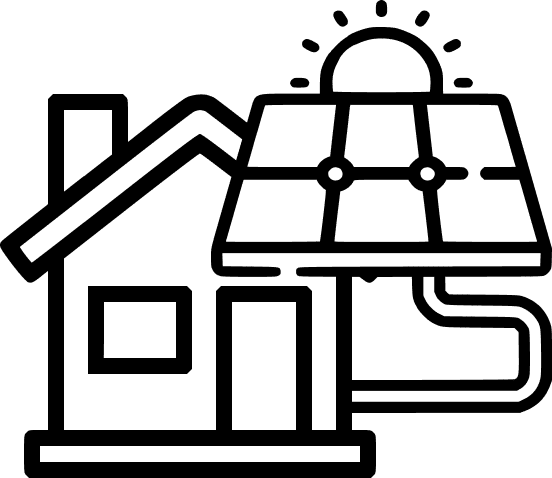
The patented technology used in our solar panels ensures maximized efficiency – even in low light – which means greater savings for our clients year round.

Research shows consumers are 100 times more likely to return a standard panel over a SunPower Panel, a testament to their quality.

The most comprehensive warranties available on the Australian market, with a full 40 Year Warranty and no hidden fine print.
Solar Systems
Empower Your Space with Leading 6.6kW Solar Systems Adelaide
It’s time to take control of your energy costs and enjoy long-term savings with an efficient 6.6kW system that meets your needs.
With over 2500+ installations, we offer a broad range of products such as panels, inverters, batteries, EV chargers and energy storage systems. We are a proud supplier of SunPower panels – both Maxeon and SunPower Performance series, with a 40-year warranty.
Join the clean energy revolution and make a positive impact on the environment by contacting us today to learn more about your own 6.6 kW solar system.
Upgrade to sustainable energy with our comprehensive solar panel packages, tailored for efficiency and cost savings.
How do you know if 6.6kW system is enough?
If you consume around 25-30 kWh of electricity per day, a 6.6kW system should meet your electricity requirements. The average energy consumption in Australia is 30 Kwh per day for a household of 3-4 people.
You need to consider your average daily energy consumption and compare it to the estimated energy production of the system.
Here are the steps you can follow:
- Calculate Your Average Daily Energy Consumption: Review your electricity bills from the past year to determine your average daily energy consumption in kilowatt-hours (kWh).
- Determine Appropriate System Size: Compare your average daily energy consumption with the estimated energy production of a 6.6 kW system.
- Consider Other Factors: These can include your energy usage patterns, the availability of net metering or feed-in tariffs in your area, and your financial goals regarding electricity bill savings and return on investment.
- Consult with a Installer: They can assess your specific energy needs, evaluate your site conditions, and provide expert advice on the appropriate system size for your property. They will consider factors such as roof space, shading, and your energy goals to recommend the most suitable system size.
By taking these steps and consulting with a installer, you can determine if a 6.6 kW system is sufficient for your property or if you need to consider a larger system size to meet your energy requirements.
Selecting the right system size depends on your budget, available roof space, electricity use and future energy plans.

How much space will 6.6kw solar system take?
The space required for a 6.6kW system can vary depending on factors such as the wattage of the individual panels and their physical dimensions. Additionally, the layout and orientation of the panels on your roof can also affect the space required.
As a general estimate, a 6.6kW system may occupy approximately 40 to 60 square meters of roof space.
The size of the panels can vary, but a typical size for residential panels might be around 1.6 meters by 1 meter. Keep in mind that panels are usually mounted in an array, with spacing between them for optimal performance and installation considerations.
Assuming the use of standard 300-watt panels, which are commonly used in residential installations, you would typically require around 22 panels.
Understanding your 6.6kW solar system options
There are several types that are considered among the best options. Here are a few popular choices:<
- Monocrystalline Panels: Known for their high efficiency, monocrystalline panels are made from a single crystal structure, allowing them to convert sunlight into electricity efficiently. They perform well in both direct sunlight and low-light conditions. Monocrystalline panels are perfect for residential, commercial, and off-grid properties where high efficiency and limited space are important factors.
- Polycrystalline Panels: Polycrystalline panels are cost-effective and offer good performance. They are made from multiple silicon fragments and have a characteristic blue appearance. While slightly less efficient than monocrystalline panels, they are still a reliable choice. Polycrystalline panels are perfect for budget-conscious residential and commercial projects with ample available space for installation.
- Hybrid Panels: Hybrid panels combine the best features of monocrystalline and thin-film technologies. They offer increased efficiency, improved performance in hot climates, and better shading tolerance. Hybrid systems are ideal for off-grid applications or areas with unreliable grid access, where a combination of the power and energy storage is needed to ensure a consistent and reliable electricity supply.
- String Inverter Systems: String inverters are a common choice for 6.6kW solar systems. They convert the DC power generated by the panels into usable AC power for your property. String inverters are cost-effective and suitable for most residential applications.
- Microinverter Systems: Microinverters are an alternative to string inverters. Unlike string inverters, microinverters are installed on each individual panel, optimising the system’s performance. They are particularly beneficial if you have shading or complex roof orientations.
Energy Buster Tip: When choosing the best type of the system for your needs, consider factors such as your budget, roof space, shading, and specific energy requirements.
What factors affect a 6.6kW solar system cost?
The cost can vary depending on various factors such as:
- Quality of components
- Installation complexity
- Any additional features.
Additionally, installation costs, such as mounting hardware, wiring, and labour, are typically separate.
6.6kW solar system benefits






What is the installation process for a 6.6kW solar system?
The installation process for a 6.6kW system in Adelaide typically involves the following steps:
Step One: Consultation and Assessment
The process begins with a consultation with a reputable installer. They will assess your property, evaluate your energy needs, and determine the feasibility of installing a 6.6kW system. They will also discuss any specific requirements or preferences you may have.
Step Two: Design and System Sizing
Based on the assessment, the installer will design a system that meets your energy requirements. They will determine the number of the panels, inverter capacity, and other components needed for the 6.6kW system.
Step Three: Obtaining Permits and Approvals
The installer will handle the necessary paperwork, including obtaining any permits or approvals required by local authorities. They will ensure compliance with building codes and regulations.
Step Four: Installation Day
On the scheduled installation day, the installers will arrive with the necessary equipment and materials. They will mount the panels on your roof or another suitable location based on the assessment. The wiring and electrical connections will be made to integrate the system with your property’s electrical system.
Step Five: Inverter Installation
The inverter, which converts the DC power generated by the panels into usable AC power, will be installed. Depending on the type of inverter chosen, it may be a string inverter installed in a central location or microinverters installed on each panel.
Step Six: Electrical Connections and Testing
The installers will make the necessary electrical connections and perform thorough testing to ensure the system is functioning optimally. They will also check for any safety issues or potential performance concerns.
Step Seven: Grid Connection and Metering
If you choose to remain connected to the grid, the installer will facilitate the grid connection process. They will work with your energy provider to install a bidirectional meter that measures the electricity you consume and any excess electricity you export back to the grid.
Step Eight: System Commissioning and Handover
Once the installation is complete and all necessary inspections have been passed, the installer will commission the system. They will explain its operation, and maintenance requirements, and provide any warranty information. At this stage, you can start enjoying the benefits of your 6.6kW system.
It’s important to hire a professional and accredited installer who can ensure a safe and efficient installation process. They will guide you through each step and ensure that your system is installed correctly and in compliance with all regulations.
If you think that purchasing panels is the right thing for you, then the next step is to decide on the best brand and system size. Get in touch with us by either calling us on (08) 7120 6377 or by filling out our fast free quote form.























































